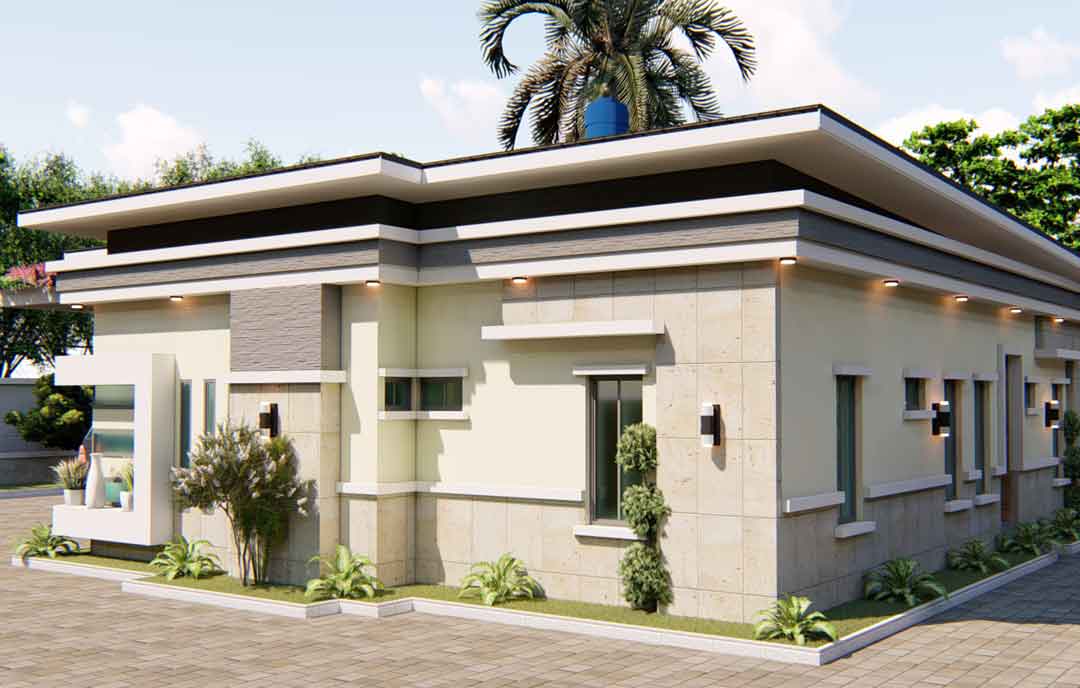Imran Roofing, renowned for its excellence in providing quality roofing solutions in Nigeria, has recently taken a firm stance on the importance of wall plastering before flat roof installation. A recent experience at the Lawanson Site prompted a crucial announcement, emphasizing that Imran Roofing will only proceed with roofing sheet installations if the requisite wall plastering and top copping are undertaken. This decision is a response to past challenges faced on flat roofs, highlighting the importance of proper wall preparation.
When it comes to constructing or renovating a building, the importance of a strong and durable foundation cannot be overstated. One often overlooked yet crucial aspect of this foundation is the plastering of walls, especially when planning to install a flat roof. In this article, we will explore the top 10 reasons why plastering your walls is essential before the installation of a flat roof.
1) Enhanced Waterproofing:
Plaster acts as a protective barrier against water infiltration. Flat roofs are particularly vulnerable to water damage, and plastering the walls provides an extra layer of defense, preventing moisture from seeping through and causing structural issues.
Are you looking for a reliable and highly experienced dealer of roofing sheets that can deliver to any location in Nigeria? If so, we highly recommend Engr. Imran Ayub , CEO of Imran Roofing and his company based in Lagos, offer a nationwide delivery.
Engr. Imran Ayub's company Imran Roofing is our top recommendation because he takes the time to educate his customers on their roofing needs, budgeting, and other important information. Additionally, he exclusively sells high-quality roofing sheets that come with comprehensive warranties, and his prices are unbeatable.
To contact Engr. Imran Ayub, please call him at 08085310359 or click here to chat up via whatsapp
2) Improved Insulation
Plastering helps in creating a more insulated environment. It acts as a thermal barrier, regulating temperature and reducing heat loss, which is crucial for maintaining a comfortable indoor climate and optimizing energy efficiency.
3) Structural Stability
Plastering reinforces the structural integrity of your walls. It provides additional support, helping walls withstand the load and stress exerted by the flat roof. This is especially important in regions prone to seismic activity or extreme weather conditions.
4) Smooth Surface for Roof Installation
A well-plastered wall ensures a smooth and even surface for the installation of a flat roof. This is essential for achieving a level and uniform roof structure, minimizing the risk of uneven load distribution and potential roof damage.
5) Prevention of Mold and Mildew
Moisture accumulation in walls can lead to the growth of mold and mildew. Plastering acts as a protective barrier, reducing the likelihood of these harmful organisms taking root. This not only preserves the aesthetics of your walls but also promotes a healthier living environment.
6) Increased Fire Resistance
Plastering materials often have fire-resistant properties, providing an additional layer of protection in the event of a fire. This can be crucial in safeguarding your property and the lives of its occupants.
7) Enhanced Aesthetics
Plastering contributes to the overall visual appeal of your interior spaces. Smooth and well-finished walls serve as a canvas for various decorative options, making your living spaces more attractive and inviting.
8) Longevity of Flat Roof
A properly plastered wall contributes to the longevity of your flat roof. By addressing potential issues at the wall level, you create a more robust foundation for the roof, reducing the likelihood of premature wear and tear.
9) Cost-Effective Maintenance
Investing in plastering before flat roof installation can save you money in the long run. Properly maintained walls are less prone to damage, reducing the need for frequent repairs and associated costs.
10 ) Compliance with Building Codes
Many building codes and regulations require the application of plaster as part of the construction process. Adhering to these standards not only ensures the safety and durability of your structure but also avoids potential legal issues in the future.




